 |
|
|
In aspheric glasses, in the range of +4 to +10 and brown and crystalline colors, in order to control convergence in close distance, 8BI to 12BI prism lenses have been pre-embedded. |
 |
High-power desktop magnifiers have two aspheric surfaces that reduce color errors at the edge of the lens and reduce distortion and increase visibility. Because these magnifiers are placed on the text, they are useful for the people who have problem of shake hand and are not able to hold a magnifier in their hands. The stand of the magnifier is flexible and can be adjusted by the patient in different situations. These magnifiers have 20D to 76D power and 3X to 20X magnification. The field of view of these magnifying glasses varies from 17 to 100 mm on the screen.
|
| | | 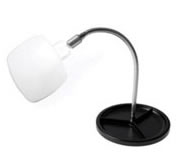 |
| | | It is a magnifier which is mounted on two fixed and non-flexible stand and can be used with a wide field of view for everyday tasks such as knitting, painting, reading and writing. You can also use this magnifier in jobs such as making watches and jewelry. |
 | | 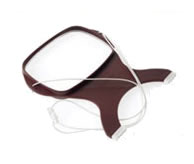 |
It is a magnifier which is mounted on two fixed and non-flexible stand and can be used with a wide field of view for everyday tasks such as knitting, painting, reading and writing. You can also use this magnifier in jobs such as making watches and jewelry. | | It is a magnifier with a wide field of view for daily tasks such as knitting, painting, etc., which is hung around the neck and can be used in close-up work. You can also use this magnifier in jobs such as making watches and jewelry.
|
 |  |  |
Telescopic glasses with a brown tint and 2X magnification, which can be used for doing activities not requiring intense focusing at very close distances, such as watching TV, participating in educational classes and doing motionless exercises, like fishing. Because of the limited field of view of these glasses (7 degrees), it is not recommended to use in moving mode such as driving. | Telescopic glasses with colorless lens and 2x magnified lens, which can be used for doing activities not requiring intense focusing at very close distances, such as watching TV, participating in educational classes and doing motionless exercises, such as fishing. Because of the limited field of view (7 degrees) of these glasses, it is not recommended to use in moving mode such as driving. | Telescopic glasses with 1.5x magnification are suitable for close-up work. The advantage of these magnifiers over hand-held and desktop magnifying glasses is that the patient can use glasses for a long time, and can, since these magnifiers are hands-free; patients can do their other activities easily. |
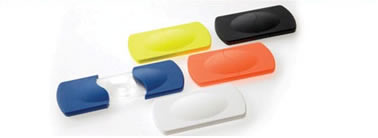 |  |
Aspheric mini magnifiers with 5x magnification are available in five different colors; black, blue, yellow, orange and white.
| Spherical lens magnifiers with 1.7x magnification are in red or blue color. Its upper and lower parts are composed of two hemispheres, which reduces the patient's stare. This magnifier magnifies half of a line of a text at one time. |
 | 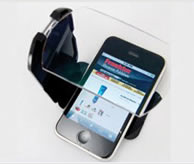 |  |
Head-mounted telescope glasses with 2.75 X/2.5X/1.75X magnification, inserted on a frame that can easily be removed when they are not needed.
| . A 2.5* 9 X folding pocket magnifier that is always available. | A round-the- neck magnifier with 4X/ 6x magnification, which is designed in a fantasy manner, and because it is hung around the neck, can easily be used anywhere, especially for activities such as reading the price of a product. |
 |  |  |
A 2X bar magnifier which magnifies a complete line of a text at one time.
| 1.5X/2X bar magnifiers which magnify a complete line of a text at one time. These magnifiers have yellow guide lines so the patient will not miss a line during reading. | A 2.5X LED light bar Magnifier with adjustment of light intensity.
|
 |  |
These magnifiers have two surfaces that reduce color errors in the lens edges and distortion and also increase visibility. These rechargeable magnifiers are equipped with LED lights that turn on during reading and increase the contrast of text images. These 3X-11X magnifiers are available with power of 8D to 40D, which according to their various types, provide a large fields of view between 20 and 80 mm to the patient. | Hand-held 3X/5X/7X magnifiers have no Lights and are designed for reading.
|
 |
A 2X bar magnifier that can magnify 2 complete lines of a text and help the patient does not miss a line during reading. |
 |
A 3X bar magnifier with ruler helps the patient does not miss a line during reading. |
 |
A 3X Magnifier magnifies three to five lines of a text at one time and helps the patient does not miss a line during reading.
|
 |  |  |
A large full page 10*12-inch transparent magnifier made of high quality acrylic lens that has a wide field of view, and is ideal for reading entire pages of newspapers.
| Telescope glasses for watching TV and distant objects at various distances. This 2.1x magnifier helps a low vision patient to watch television with a simple adjustment.
| A 2.5x sport binocular magnifying glasses for farsightedness have the ability to adjust the distance between eyes and adjust the farsightedness for various distances in far distances. These glasses also have adjustable nose bridge. |
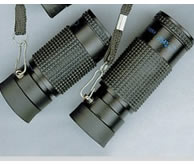 | 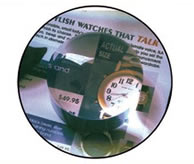 |  |
A monocular hand-held 4X magnifier is used for close vision and for a distance of 35 meters. This magnifier is portable and has an adjustable neck strap. | A large spherical magnifier with 4x magnification that because of the absence of a frame around it, Increases light transmission.
| A 4.4X spherical magnifier for reading with retractable reading lines.
|
 |  |  |
A monocular hand-held 8X magnifier is used for close vision and for a distance of 50 meters. This magnifier is portable and has an adjustable neck strap. | Study magnifying glasses with power of 4.00+, 5.00+, 6.00+, with different frames for reading and doing close work.
| Fantasy types of stand magnifiers with a 2X magnification for close vision and reading
|
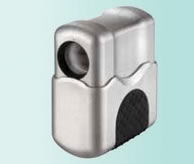 | 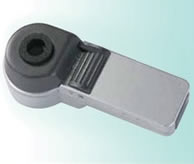 |  |
This portable folding telescope can be easily used for far vision. Have a wide 13 and 18-degree field of view is one of the capabilities of two models of these telescopes with magnifications of 4X and 6X. This device will be very useful for young and active people. | This magnifying vision aid, with a magnification of 2.5X for far vision and 3.2X for close vision, is suitable for both close and far vision. The unique features of this visual aid are the lightweight and its appropriate design.
| A 10x magnifying portable, wall mounted mirror which enables patients to see their facial features.
|
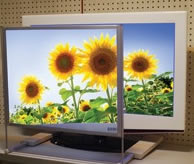 | 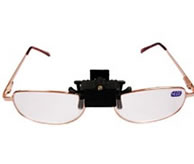 |  |
A 2X screen magnifier, which is designed for attachment in front of a television screen, and in addition to magnifying images, it also increases the clarity and contrast of the image. This magnifier is available in three sizes of 25-15, 35-25, 35-30 inches. | A small flashlight that can be installed on any glasses and provides light for study.
| A 10x folding magnifying mirror with light
|
 |  |  |
A 7x wall-mounted magnifying mirror |
A 5X/10X wall-mounted magnifying mirror which enables patients to see their facial features | This phone is used for low vision people. It has big buttons with large high contrast numbers. It is possible to save 25 contacts phone numbers in the phone memory for automatic dialing and after each call the caller’s name with an adjustable sound is automatically called. |
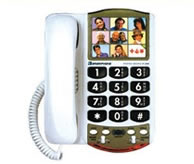 |  |  |
This phone is used for low vision people. It has big buttons with large high contrast numbers. It is possible to save 9 photos of the patient’s relatives in the phone memory for automatic dialing so that by pressing the button that has a photo, the patient can easily dial the contact number. | A wireless large screen speaker phone with a loud speaker for low vision people
| This nail clipper is equipped with a magnifying lens and LED light, which makes it easier for the patient to do their personal tasks independently.
|
 |  |  |
A liquid level indicator for a cup or glass by either sounding tone or vibrating, for low vision people | A device is used to help low vision people put in their eye drops independently
| A sample of bold line writing paper and a bold line writing pen for low vision people to remain independent in regards to writing.
|
 | 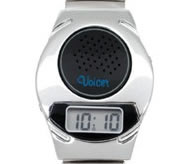 |  |
Threads and needles kits for low vision people
| A silver talking watch with large LCD digital screen for low vision people | A watch for low vision people with a black face and large white numbers, which has a leather strap and golden frame. |
 |  |  |
This pen is equipped with a light that during writing turns on automatically and make writing easier for low vision people.
| This magnifier mouse connects to a unit of a computer monitor or television like a simple mouse, moves on the entire text and displays the text larger on the TV or computer screen. According to the size of the TV, the device can magnify a text up to 26X for 21-inch TVs.
| Quick look focus electronic magnifier is available in three Classic, Zoom, and Focus models. These systems have 2X-12X magnification. The screen of all of them is 4.3 inches, which because of being equipped with LCD technology can provide a good vision condition for the user. With this magnifier it is possible to take a screenshot, freeze the image and also rotate the images appropriately. It can be used by low vision people for reading and writing.
|
 | .jpg) |  |
Perhaps one of the most important complications of visual aids is the ability to view images at close and far distances with proper magnification and field of vision. This is especially important for students who need to look at whiteboards and also the text of their books. These electronic devices allow simultaneous viewing of close and far images on a computer screen. Diverse magnification and field-of-view changes and image processing are among the privileged features of the video magnifiers. | A yellow color filter is mounted on glasses to filter blue light and increase the contrast. This filter can be removed from the surface of glasses when the individual wants. It can also be placed on different types of frames.
| A dark gray-colored filter mounted on glasses with a light transmission level of 13%, which can be used in patients with glaucoma to increase the contrast and reduce annoying lights.
|
 | 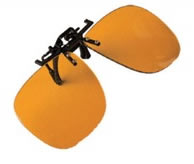 |  |
A yellow, amber tinted filter mounted on glasses with a light transmission level of 53% to filter blue light | A yellow, amber tinted filter, mounted on glasses to filter blue light and increase the contrast
| Non-polarized yellow sunglasses with black frames are mounted on prescription glasses. These sunglasses are suitable for people who wear glasses for distance vision. The glasses frames protect the eyes completely from sunlight and ultraviolet rays.
|
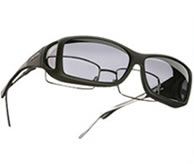 | 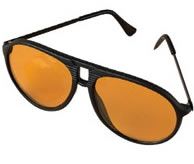 | 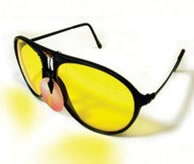 |
Polarized gray sunglasses can be used on medical glasses. These sunglasses are suitable for people who wear glasses for distance vision. The glasses frames protect the eyes completely from sunlight and ultraviolet rays.
| Amber tinted sunglasses to filter blue light and increase the contrast | Yellow sunglasses to filter blue light and increase the contrast
|